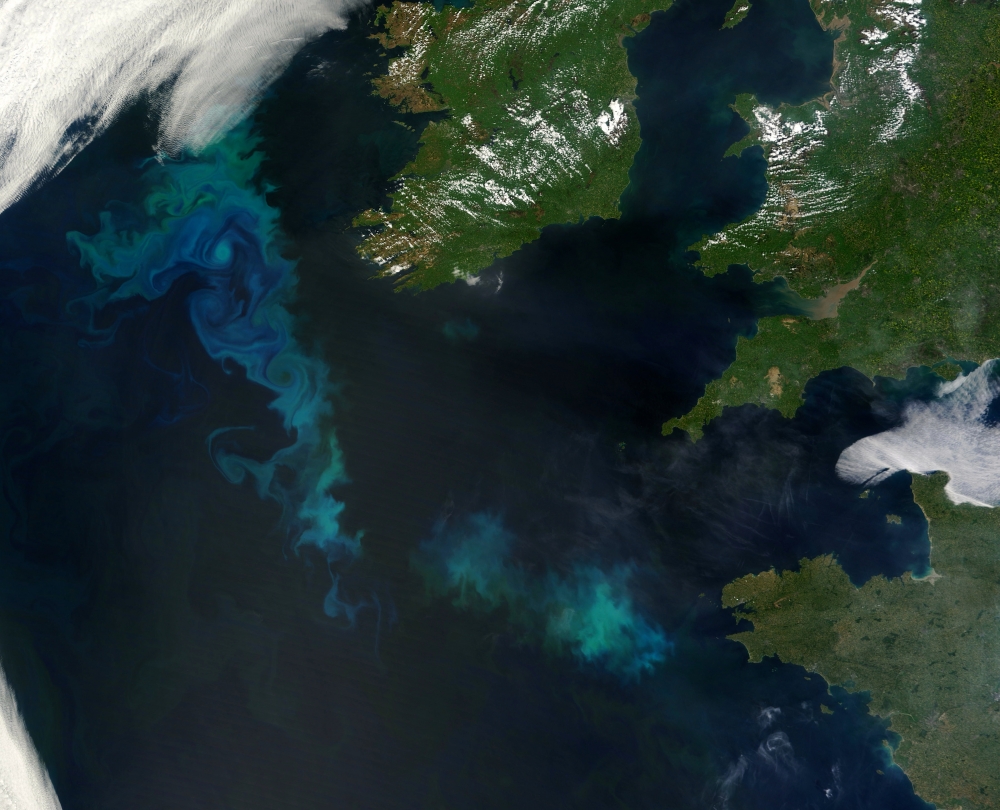
Understanding Ocean Processes

On the ocean’s sunlit surface, phytoplankton absorb carbon during photosynthesis. A portion of that carbon filters through the marine food web before sinking into the ocean depths, where it remains for years, or even millennia. This process, known as the biological pump, significantly affects the Earth’s climate.
“The pump is climatically important because the amount of carbon that sinks from the surface to the deep ocean on an annual basis is about the same as the amount of carbon humans pump into the atmosphere each year by burning fossil fuels,” said Timothy DeVries, an assistant professor in the Department of Geography. “A small change in the strength of this biological pump could have a big impact on CO2 and subsequently on climate.”
With a grant from NASA, DeVries is using satellite data and oceanographic observations to construct models that address substantial uncertainties in how the ocean’s biological pump operates and how it responds to climate change. The three-year grant is part of NASA’s New (Early Career) Investigator Program (NIP) in Earth Science.
DeVries aims to correlate what the satellites see at the ocean surface with data from subsurface observations, providing further insight into photosynthesis, phytoplankton and concentrations of elements in seawater.
“By building a model that fits both what satellites detect and what the oceanographic observations tell us about the subsurface, we hope to ultimately have a model that can predict what’s happening subsurface, where it’s often difficult to gather data,” DeVries continued. “While we will use data from other sources, such as autonomous floats designed for hard-to-reach areas, satellites can observe the Earth with much better coverage and at faster rates than we can get from going out on ships and measuring what’s happening subsurface.”
For instance, remote sensing of the ocean’s color and how light scatters off the surface can be mathematically converted into estimates of primary production, a measure of how much photosynthesis occurs in the well-lit upper ocean.
Satellite data also provides information about particles in the surface ocean, which can then be correlated to phytoplankton size and abundance. Certain regions of the ocean known as subtropical gyres have small plankton populations due to low nutrient availability, which limits primary production. On the other hand, upwelling in coastal and high-latitude regions provides nutrients for large plankton populations whose productivity is abundant.
Not only does population size vary, but so do the species or functional types of plankton. For example, diatoms, a major group of algae, thrive in areas with ample nutrients, while prochlorococcus, a marine cyanobacteria, dominate in the subtropical gyres, which are also known as the “deserts” of the oceans.
DeVries’ project will correlate such satellite data with subsurface observations known as tracers. These consist of the concentrations of nutrients, oxygen and carbon that are dissolved in seawater, some of which are byproducts of photosynthesis.
“These tracers carry the imprint of biological processes,” DeVries explained. “For example, when phytoplankton respire, they consume oxygen, which appears as a decrease in oxygen concentration. Respiration also releases nutrients back into the seawater, which is seen as an increase in nutrient concentration.”



